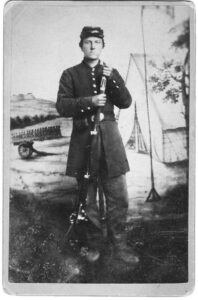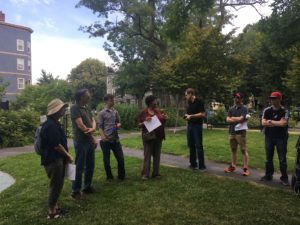Posts Tagged ‘industry’
Minimum Wages for Women in Early 20th Century Cambridge
By Sarah Huggins, Intern, Lesley UniversityMarch 2020 What image enters your mind when thinking about Cambridge? For many, it’s the Corinthian columns of our prestigious institutions of higher education. But less than a hundred years ago the city was a major industrial center:- a manufacturing mecca of brick buildings and smokestacks. The Boston Daily Globe…
Read More1861: The Civil War Comes to Cambridge
Cornelius Gerrit Hendrick Bennick enlisted in April 1861, joining some 100 other Cambridge men in Company D, 5th Regiment, Massachusetts Infantry. The unit fought in several major battles, including Gettysburg. After the war, Bennick was a member of the Common Council and the Massachusetts House of Representatives. His papers are in the Cambridge Historical Society…
Read MoreSome Aspects of the East Cambridge Story
By John W. Wood, 1956 “This paper gives a totally inadequate account of an appealingly picturesque and colorful neighborhood, the area that might have been a slum and isn’t, the step-child of the University City. “ – J. W. W. For some reason, the local history of East Cambridge has been almost completely neglected. It…
Read MoreSelf-Guided Tour: Caribbean Community in the Port
This tour focuses on the history of the Caribbean community in the Port through personal stories in the context of places of work, education, worship, and outreach.
Read MoreCambridgeport: Its People and Their Stories
By Michael Kenney, Winter 2011 Cambridgeport stands, geographically and socially, midway between East Cambridge and Old Cambridge, neither a traditional southern European enclave nor the remnants of Puritan New England. This issue of the Newetowne Chronicle focuses on Cambridgeport and its vibrant past through a collection of articles and a report on the celebration of…
Read MoreRiverside: A Rowing Club for Workers
By Richard Garver, 2011 Riverside Boat Club was founded in 1869 as a trade-based rowing club by workers, predominantly Irish, from The Riverside Press, which was located between River Street and Western Avenue. Its first boathouse was a disused press building. Rowing was one of America’s most popular sports at the time. Boston’s July 4…
Read MoreWhere Portuguese Families Found a New Home
By Sarah Boyer, 2013 Portuguese families from the North End of Boston and East Boston started to move into East Cambridge soon after the Civil War. Most of them had emigrated from the Azores, an archipelago 800 miles off the coast of Portugal, mainly from the largest island, São Miguel. Their numbers increased in the…
Read MoreNew Wine in Old Bottles
By Michael Kenney, 2017 Sunday brunch time and weekday happy hours, the courtyard at the corner of Broadway and Hampshire Street is a lively place, with hipsters and families enjoying the bars and restaurants grouped around the open brick-paved space. Hard to believe, but it was even more bustling a century ago, when shifts of…
Read MoreThe Downside of Progress
By Doug Brown, 2017 Cambridge has made a lot of things over the centuries, not all of them valuable. Our manufacturing history has its dirty, dangerous downside, and dealing with the hazards and by-products of production has always been a challenge in this jam-packed, 7.1-square-mile city. By the end of the 19th century, the technological…
Read MoreThe Reverend Jose Glover And The Beginnings Of The Cambridge Press (Part 2)
by John A. Harrer, 1960 This article can be found in the Proceedings of the Cambridge Historical Society Volume 38, from the years 1959-1960. The newly appointed printer, Samuel Green, having had no experience in his new trade, was at once confronted with the work of producing a small book that involved some problems not…
Read More

